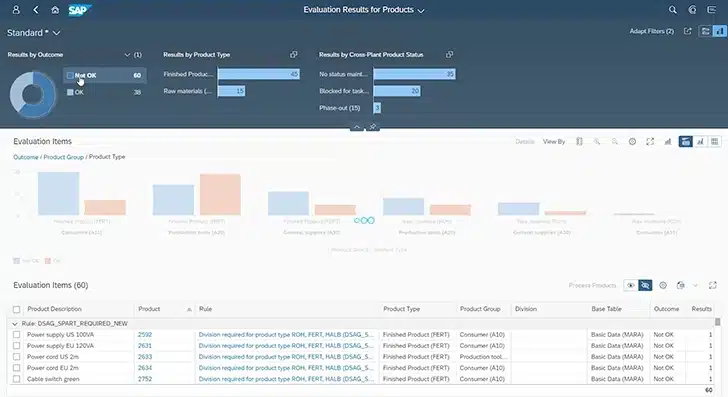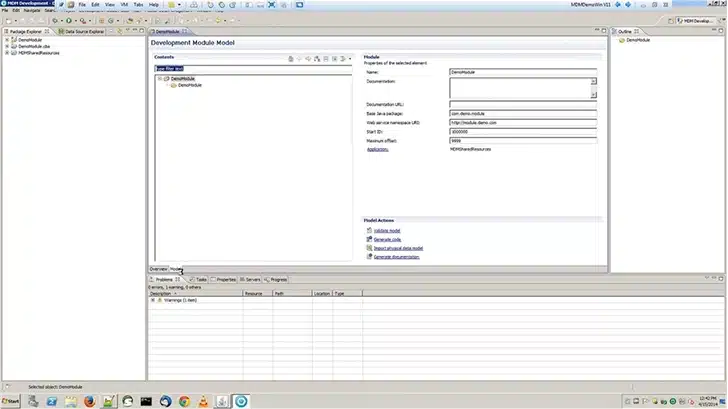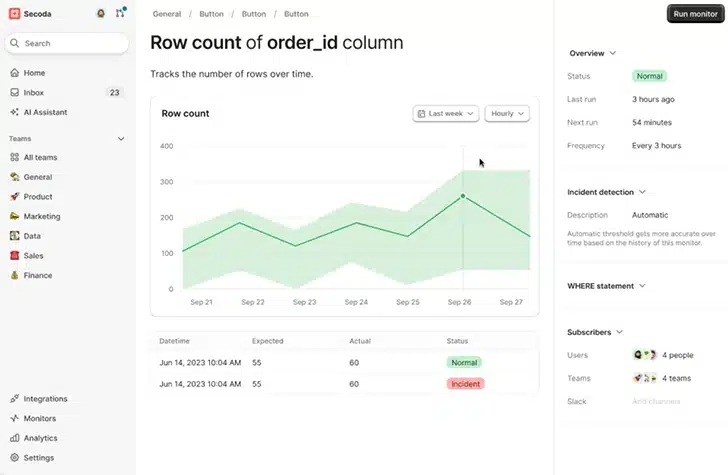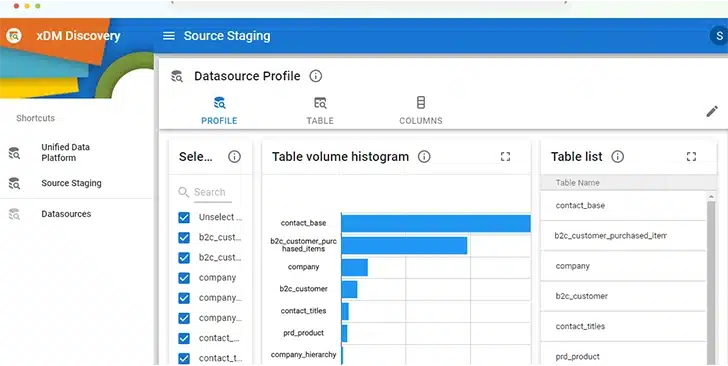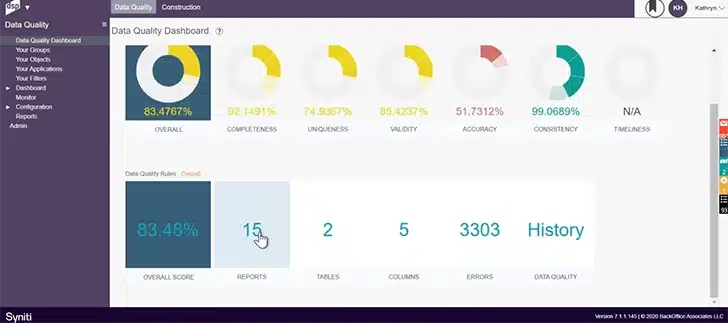What if all your business data could be clean, organized, and easy to find? This is exactly what master data management tools promise to do. But with so many options available, how do you know which tool is right for your business? In this insightful post, we will break down the top choices in simple terms, like what they do well, where they might fall short, and how to pick the perfect fit for your business. Let’s explore together!
Salesforce Managed Services offer ongoing support and maintenance to keep the Salesforce CRM functioning effectively and in sync with the organization’s evolving needs. Think of it as an extended dedicated and skilled team of your Salesforce or IT team that is just a call away and provides services at lesser costs. Businesses don’t have to go through the hassles of hiring, managing, or retaining professionals.
What Are the Top Master Data Management Tools?
Good master data management tools help businesses keep their data clean and organized. The best ones make it easy to maintain accurate records and avoid duplicates. Below are the top tools that help organizations maintain quality data across departments.
1. SAP Master Data Governance
SAP Master Data Governance is a data tool that works perfectly with other SAP business systems. It helps companies manage their core business data like customers, materials, and vendors. The platform lets teams work together to keep data clean and accurate. Companies can set up rules to check data quality automatically. This tool is ideal for businesses using SAP systems for daily operations.
Key Features:
- SAP system integration
- Workflow driven data management
- Data quality validation
- Role guided access management
- Business process integration
| Pros | Cons |
|---|---|
| Works seamlessly with SAP systems | Not useful without other SAP products |
| Strong workflow management | Can be complex to configure |
| Good data validation features | Expensive for non-SAP users |
| Built for business processes | Needs SAP knowledge to manage |
| Excellent for SAP environments | Integration with non-SAP tools is limited |
| Strong governance capabilities | The interface could be improved |
2. Reltio
This cloud-based data management tool works in real-time. It helps companies connect their customer, product, and supplier data instantly. The platform uses smart technology to understand relationships between different pieces of data. Teams can see changes to their data as they happen. This tool is ideal for businesses requiring immediate data updates across all systems.
Key Features:
- Real-time data processing
- Cloud-native platform
- Relationship mapping
- API-first design
- Connected data insights
| Pros | Cons |
|---|---|
| Updates data in real-time | Can be expensive for small businesses |
| Easy to use cloud interface | Requires a good internet connection |
| Shows data relationships clearly | Limited customization options |
| Quick to set up and deploy | May need additional training |
| Good API connectivity | Less control over data location |
| Modern, intuitive design | Dependent on cloud availability |
3. IBM InfoSphere Master Data Management
This strong data management tool is built for large companies. It brings together data from all business systems into one trusted place. The platform helps companies follow data rules and stay compliant. Teams can see how their data connects across departments. This tool is great for businesses that need to handle millions of records safely.
Key Features:
- Enterprise-grade scalability
- Data governance compliance
- Graph-based data exploration
- Regulatory adherence tools
- Unified data views
| Pros | Cons |
|---|---|
| Handles large datasets | Interface can feel outdated |
| Strong security and compliance | Expensive licensing costs |
| Works well with IBM systems | Complex implementation process |
| Good for regulatory requirements | Requires IBM expertise |
| Reliable performance for enterprises | Limited cloud-native features |
| Excellent data governance features | Can be slow with some operations |
“Modern MDM platforms have evolved from static repositories to active systems that drive real-time business decisions.” – Aaron Zornes, Chief Research Officer, MDM Institute.
4. Ketch
This smart data privacy tool helps companies manage their data better. It shows you where all your information is stored. The tool updates itself when new systems are added. This means you always know what data you have and where it lives. Ketch makes it easy to follow data rules and keep customer information safe.
Key Features:
- Real-time data mapping
- Automated data discovery
- Risk management system
- Data classification tools
- Consent management features
| Pros | Cons |
|---|---|
| Shows clear data maps | Needs regular updates for new rules |
| Works with many different systems | Takes time to learn the system |
| Handles customer requests automatically | May need adjustments as rules change |
| Finds data risks before they happen | Setup can be complex initially |
| Updates data maps in real time | Requires ongoing maintenance |
| Easy to customize for business needs | May need training for full use |
5. Secoda
This data tool brings all your company’s information into one place. It helps teams find and understand their data easily. The tool shows how data moves through your systems and connects different pieces of information. Teams can search for data like they search on Google. This makes it simple for everyone to find what they need without asking IT teams for help.
Key Features:
- Data lineage tracking
- Smart search function
- Data quality scoring
- Team collaboration tools
- Access control system
| Pros | Cons |
|---|---|
| Shows how data flows between systems | Some automatic features can fail |
| Smart search helps find data fast | Permission system can be confusing |
| Works well with popular tools | Interface might feel overwhelming |
| Tracks data quality automatically | Some features need technical knowledge |
| Good for teams working together | Limited customization options |
| Easy for non-tech people to use | Can be slow with large datasets |
6. OneTrust
This data management tool helps large companies control their data better. It finds data problems and fixes them automatically. The tool works well with other business systems you already use. Companies can see all their data risks in one place and take action quickly. This helps businesses stay safe and follow data protection rules.
Key Features:
- Data risk detection
- Automatic problem fixing
- AI-powered data discovery
- Integration with other tools
- Governance tracking system
| Pros | Cons |
|---|---|
| Finds and fixes data problems automatically | Can be slow when finding data |
| Shows data trends over time | Hard to connect with some tools |
| Uses smart AI to classify data | Complex setup process |
| Works with many business systems | Expensive for small companies |
| Helps follow data protection rules | Interface can be confusing |
| Good for tracking data governance | Limited support for custom needs |
7. EnterWorks
This tool helps businesses understand their products better. It connects different databases to create complete product records. The platform uses a simple design that eliminates the need for coding skills. Companies can learn more about their customers, sales, and locations through this tool. This helps them make better business decisions and grow their revenue.
Key Features:
- Product information management
- Digital asset management
- Low-code platform design
- Revenue intelligence tools
- Customer data insights
| Pros | Cons |
|---|---|
| Gives detailed product information | No free trial available |
| Easy to use without coding | Sometimes shows errors in tasks |
| Helps increase business revenue | Limited customization options |
| Works with popular databases | Can be expensive for small teams |
| Simple interface for quick learning | Support response can be slow |
| Good for product-focused businesses | Limited training resources |
8. Semarchy xDM
This data management tool is designed for users with no coding background. It helps teams work together to manage and visualize data. The platform has smart features that match and combine data from different sources. Users can also craft business apps without writing code. This makes it easy for companies to measure the success of their data projects.
Key Features:
- Zero-code platform design
- Smart data matching
- Custom automation rules
- ROI measurement tools
- Flexible architecture system
| Pros | Cons |
|---|---|
| No coding needed for apps | Takes time to learn fully |
| Grows with your business needs | Some advanced features are hidden |
| Smart automation saves time | Can be complex for beginners |
| Works with many different systems | Limited free learning materials |
| Good for measuring success | Setup might need expert help |
| Flexible design fits most businesses | Interface could be more intuitive |
9. TIBCO EBX
This flexible data management system lets companies share their master data easily. The platform combines multiple capabilities to manage and customize data sets. It allows users to model different types of data relationships. Companies can quickly deploy new applications when needed. This makes it a coveted choice for businesses that need to adapt their data systems often.
Key Features:
- Data modeling tools
- Workflow customization
- Governance controls
- Integration capabilities
- Rapid deployment features
| Pros | Cons |
|---|---|
| Brings in data from files easily | No free trial to test |
| Works with almost any application | Interface could be better |
| Highly customizable for different needs | Complex for new users |
| Connects to many databases | Limited documentation |
| Good for complex data relationships | Expensive licensing costs |
| Fast deployment of new features | Requires technical expertise |
10. Syniti Master Data Management
This data management tool focuses on business results. It connects clean master data to company improvements and tracks key performance indicators. The platform uses smart AI to match data and reduce errors. Teams can see how their data improvements affect business outcomes. This helps companies understand the value of their data management efforts.
Key Features:
- KPI tracking system
- AI-driven data matching
- Financial impact measurement
- End-to-end MDM process
- Knowledge pack library
| Pros | Cons |
|---|---|
| Tracks business improvements clearly | Hard for beginners to learn |
| Works with any business process | Log details could be better |
| Reduces data quality errors | Limited user-friendly guides |
| Shows financial benefits quickly | Can be overwhelming initially |
| Uses smart AI for data matching | Expensive for small businesses |
| A good knowledge sharing system | Requires extensive training |
11. Pimcore Open Source Data Management
This data management tool comes with strong workflow features. It helps teams handle data quality issues through organized processes. The platform lets users create complex data structures and classifications. Teams can design custom workflows for their business processes. This makes it easier to manage and resolve data problems in an organized way.
Key Features:
- Workflow management engine
- Data hierarchy modeling
- Custom business processes
- Historical data views
- Golden record creation
| Pros | Cons |
|---|---|
| Shows data history for better tracking | Developer docs need improvement |
| Supports many data formats | Installation can be difficult |
| Easy to create data cleaning rules | Technical setup required |
| Free open-source option | Limited commercial support |
| Good for custom workflows | The interface could be more modern |
| Flexible data modeling capabilities | Requires technical expertise |
Telltale Signs Your Enterprise Data Management Strategy Needs a Maturity Assessment
How to Choose the Right Master Data Management Tools?
The right master data management tool saves time and reduces errors, but how do you pick one? Start by looking at your data needs and team skills. Given below are simple ways to evaluate tools, so you can find the best match for your business.
I. Know Your Data Problems First
You need to understand what data issues your company faces before picking any tool. Look at where your data is messy, duplicated, or outdated. Check which departments struggle the most with bad data. This helps you find a tool that solves your data engineering problems rather than buying something you don’t actually need.
- Find duplicate customer records
- Check data quality issues
- List current data sources
- Identify problem departments
- Document specific pain points
- Review existing data processes
II. Check Your Budget and Costs
Master data management tools cost may vary depending on what you need. Some charge monthly fees while others want yearly payments. Remember to include training costs and setup fees in your budget. Think about how much money bad data currently costs your business to justify the investment.
- Calculate monthly tool costs
- Include training and setup
- Take ongoing licensing costs into account
- Check hidden additional costs
- Compare different pricing models
- Factor in maintenance expenses
III. Make Sure It Works with Your Systems
The tool you choose must connect easily with your existing software. Verify that it integrates with your customer database, sales system, and other key programs. Ask vendors for a list of systems they support. A tool that fails to connect well will create more problems than it solves.
- List your current software
- Check integration capabilities
- Test connection quality
- Review supported file formats
- Verify API availability
- Confirm database compatibility
IV. Reflect on the Skills of Your Team
Take into account how skilled your team is with technology before deciding on a tool. Some platforms require coding skills, while others are simple to use. Check whether you have access to IT support. Pick something your team can use without requiring months of training to get started.
- Assess team technical skills
- Check the simplicity of user interface
- Review training requirements
- Consider IT support needs
- Test the ease of use
- Evaluate learning curve difficulty
V. Plan for Future Growth
Your data needs will grow as your business gets bigger. Choose a tool that can scale to support growing data and user needs. Check if you can add new features later without switching to a completely different system. This saves money and prevents headaches down the road.
- Review scalability options
- Check user limit flexibility
- Consider data volume growth
- Evaluate feature expansion possibilities
- Test performance with growth
- Plan for future integrations
VI. Test Before You Buy
Always try the tool before making a final decision. Many vendors offer free trials that you can use. Test it with your actual data to see how well it works. Get feedback from team members who will use it daily. This prevents expensive mistakes later.
- Request free trial access
- Test with real data
- Get team member feedback
- Check customer support quality
- Review documentation availability
- Evaluate the implementation timeline
Drive Business Impact with Damco’s Expertise
Choosing the right master data management tool need not to be tricky. We have explored the top options, and now the decision is in your hands. Start by identifying your top business priorities and then match those needs with the features each tool offers. With the right master data management solution, you will spend less time fixing data problems and more time using your information to grow your business. You may also seek help from a master data management services provider like Damco to make the most of MDM tools.




